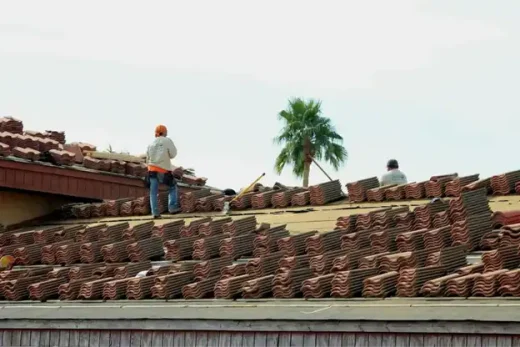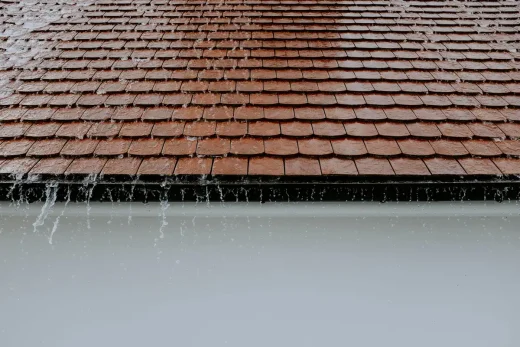Preparing your roof for rough weather advice, Roofing repair contractor, Building home maintenance
Preparing Your Roof for Rough Weather
18 January 2025
Lots of things can damage your roof, but the most obvious and ubiquitous roof risk is the weather. Hard rain, heavy snow, and pelting ice are just a few of the most common risky weathers.
Luckily, there are quite a few things you can do to protect your roof and simplify your roof replacement project. The following steps can usually be performed by handy people, but if you’re not one of them or are too afraid of heights to get up onto your roof, contact your local roofers about getting them to at least do the first task: an inspection.
Perform an Inspection
You need to hire a professional roofer to inspect your roof at least once a year. They’ll find, report and even suggest ways to fix a whale ton of potential issues, many of which you may not have even known to watch for. This shouldn’t be the only roof inspection you do, though; you need to do one yourself every now and then.
Both before and after hefty rain and winds, check your roof for any signs of damage and perform at least temporary repairs to stop the problem from getting worse until you can do more permanent ones. Also check your attic. You need to make sure that you have plenty of clean and dry insulation and that there are no water spots or rotted supports.
Should you see either of these issues, take note and do some temporary repairs until you can either gather the necessary materials to do the repair yourself or get an appointment with a professional roofer.
When the weather ends you’ll need to do another inspection. See if any new damage has been caused and see how well your temporary repairs are doing. Do more temporary repairs if the storm caused damage and make an appointment with your local roofer to remedy them as soon as possible, especially since some issues are indicative of even deeper problems that may need to be addressed quickly.
Clean Your Gutters
Cleaning your gutters can be a tedious task for anyone to deal with but the consequences for failing to do it are large. As debris like leaves fill up the gutter, more and more water is blocked from entering and following the intended path away from the home. Rainwater and snow or ice melt will end up pooling as a result, which can soak the roof and insulation and eventually cause you a serious leak problem.
Your gutters could also end up damaged as the debris sits there and slowly rots away. If you aren’t surrounded by many trees, they need to be cleaned at least twice a year, but if you’re surrounded by trees then increase that to once per season.
Not removing the leaves before winter hits can bring a whole new problem. See, when it snows, some of it will sit on your roof and be melted by the sun. The resulting water then follows the slope of the roof to the gutter. If the gutter is shaded, that water may begin to freeze immediately. If the gutter is exposed to the sun then the water will freeze once the clouds hide the sun or night falls.
The resulting ice will fill your gutter which can be a problem on its own. If left unaddressed for too long, though, you’ll see icicles begin to form on the sides of the gutter and this can happen even faster if debris is blocking the water from traveling down the gutter correctly. These icicles may look pretty, especially when the sunlight hits them just right and they sparkle, but they are actually quite the problem.
They’ll weigh the gutter down and are a sign that water is pooling. As the pooling water drips down the sides of the gutter, it refreezes and creates these icicles. Pooling water can lead to leaks, and as the icicles grow they get heavier and heavier so they can cause the gutter to start to sag.
Luckily the repair is simple: knock the icicles down and remove the ice from the gutter. Catching it early enough may prevent a lot of damage, so try and walk around your house at least once a day after it snows and deal with this issue as soon as it starts to happen.
Wash the Nasty Away
Cleaning your roof will make it and your house by extension look better but that is far from the only reason why you need to do so. Another reason is the water may help you identify not only that your roof is leaking but also where it starts. The biggest reason, though, is to clear off unwanted pests.
Moss, algae, lichen and more can all grow on your roof’s shingles causing damage by collecting moisture. There are many cleaning solutions available on the market to make this process easier. On top of this you can also apply one of the many preventative solutions to prevent these harmful organisms from growing again for a while at least.
Inspect Nearby Trees
Once the roof itself has been thoroughly inspected, repaired and cleaned, it’s time to examine the surrounding environment. Specifically, you want to examine the trees close to your roof. Roofs are easily damaged by tree limbs that are blown across or into them by high winds and the damage caused by trees falling onto a roof needs no explanation as to why it should be avoided.
When you go to examine the trees, you’ll want to start by seeing how healthy the trunk itself is. If it looks like it’s starting to rot, call in an expert and ask them for advice, especially if it is so close to your home that you expect its roots to be a problem. After the trunk has been examined and you’ve determined the tree can stay then look up. If there are any large branches hanging over your roof, you see weak limbs that may be blown off or there are branches dangling from the tree, take care of them.
Cut, collect and remove as many branches as necessary to keep your home safe. If there is a young tree that’s too close to your home you may be able to contact local plant professionals to collect and relocate it for you. Everyone from some arboretums to avid gardeners may be interested in rehousing your tree-to-be, so don’t just toss it out or burn it.
Comments on this guide to Preparing your roof for rough weather article are welcome.
Home Roofing
House Roofing
How to choose the right roofing materials

Architectural trends in roofing for aesthetics and performance
Questions to ask a roofing contractor
Property Design
Contemporary Property Designs – recent architectural selection from e-architect below:
Comments / photos for the Preparing your roof for rough weather help guide page welcome.






